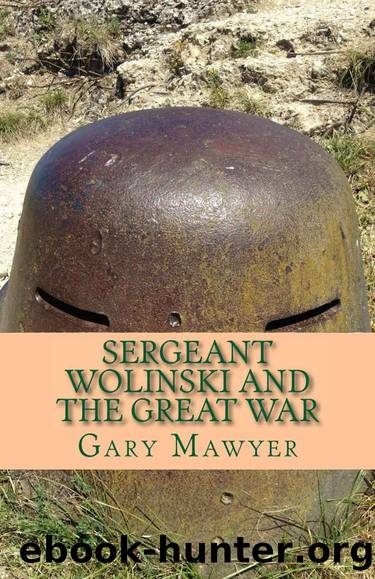Sergeant Wolinski and the Great War by Mawyer Gary

Author:Mawyer, Gary [Mawyer, Gary]
Language: eng
Format: epub
Published: 2019-01-27T00:00:00+00:00
The St. Mihiel Salient
There was still a huge entrenched bulge in the Western Frontâthe St. Mihiel Salient east of Verdun. Fighting in the salient in 1915 and 1917 had cost over 200,000 French casualties without moving the lines. General Pershing originally chose the St. Mihiel Salient as the future American sector. After the recovery of Soissons, Pershing rightly feared the German army would evacuate this bulge to shorten their front before he could seize it from them. The base of the St. Mihiel bulge was very close to the French border with Germany, and Pershing anticipated breaking through the salient, capturing Metz, and crossing into German territory.
Pershingâs French advisors, however, convinced him that an attack on the Metz defensive zone, which was massively fortified aboveground and studded with vast underground fortresses, would rapidly devolve into a second Verdun. The French were anxious to see the A.E.F. assault the area west of Verdun, the Argonne Forest, cutting the main transportation corridor from Liege in Belgium along the Meuse valley.
Pershing reconsidered. He required massive support from French artillery and the French air force to attack anywhere. A compromise was reached. The French would support a swift and overwhelming American offensive eliminating the St. Mihiel salient, if the A.E.F. rapidly shifted west of Verdun to attack the Argonne Forest, opening the way to Luxembourg and Coblenz through a comparatively open land corridor not barred by fortresses like those around Metz.
American planners still had their doubts. Moving the A.E.F. cross country, which would have to happen mainly on foot, on such a timetable seemed a hard thing to arrange. However, the St. Mihiel attack would not only damage a large section of the German front, it would also be a major distraction if the fatal blow was planned to fall in the Argonne Forest instead of Metz. In the end Pershing and Marshal Foch agreed to conduct both offensives.
Ten U.S. divisions and three borrowed French divisions were assigned to attack the St. Mihiel Salient at the southern and western sides of the bulge. The 4 th Division was sent to the western base of the salient. Frank Wolinski was marched with the rest of his regiment about ten miles east of Verdun, into French trenches near Eparges, not far from where the modern A4 Highway runs to the German border about 20 miles away.
For the next few days, the division experienced old-fashioned trench war for the first and last time, living underground by day and going on nightly moonlight patrols in a No Manâs Land of craters and shattered trees thoroughly pounded to ruin and devoid of life as far as the eye could seeâexcept of course for the equally nocturnal Germans across the way. The divisional history hints that some found this to be a nearly peaceful interlude, with uneventful patrols by moonlight that were close to the sort of thing the Americans originally thought they would be doing when they joined the army.
Even the most optimistic soldiers could not help noticing how the previous attacks in this area had all been disasters, even though things seemed quiet now.
Download
This site does not store any files on its server. We only index and link to content provided by other sites. Please contact the content providers to delete copyright contents if any and email us, we'll remove relevant links or contents immediately.
Fanny Burney by Claire Harman(26529)
Empire of the Sikhs by Patwant Singh(22978)
Out of India by Michael Foss(16792)
Leonardo da Vinci by Walter Isaacson(13189)
Small Great Things by Jodi Picoult(7024)
The Six Wives Of Henry VIII (WOMEN IN HISTORY) by Fraser Antonia(5398)
The Wind in My Hair by Masih Alinejad(5034)
A Higher Loyalty: Truth, Lies, and Leadership by James Comey(4851)
The Lonely City by Olivia Laing(4751)
The Crown by Robert Lacey(4731)
Millionaire: The Philanderer, Gambler, and Duelist Who Invented Modern Finance by Janet Gleeson(4386)
The Iron Duke by The Iron Duke(4293)
Papillon (English) by Henri Charrière(4199)
Sticky Fingers by Joe Hagan(4105)
Joan of Arc by Mary Gordon(4017)
Alive: The Story of the Andes Survivors by Piers Paul Read(3970)
Stalin by Stephen Kotkin(3883)
Aleister Crowley: The Biography by Tobias Churton(3589)
Ants Among Elephants by Sujatha Gidla(3417)
